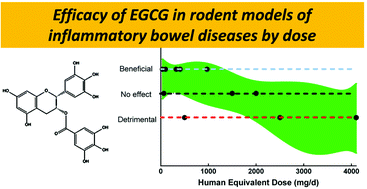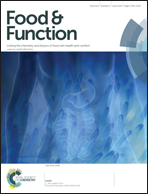A review of the efficacy of dietary polyphenols in experimental models of inflammatory bowel diseases
Abstract
Crohn's disease and ulcerative colitis presently have no cure and are treated with anti-inflammatory drugs or monoclonal antibodies targeting pro-inflammatory cytokines. A variety of rodent models have been used to model chronic and acute colitis. Dietary polyphenols in foods and botanicals are of considerable interest for prevention and treatment of colitis. Many dietary polyphenols have been utilized for prevention of colitis in rodent models. Berries, green tea polyphenols, curcumin, and stilbenes have been the most extensively tested polyphenols in rodent models of colitis. The majority of polyphenols tested have inhibited colitis in rodents, but increasing doses of EGCG and green tea, isoflavones, flaxseed, and α-mangostin have exacerbated colitis. Few studies have examined combination of polyphenols or other bioactives for inhibition of colitis. Translating polyphenol doses used in rodent models of colitis to human equivalent doses reveals that supplemental doses are most likely required to inhibit colitis from a single polyphenol treatment. The ability to translate polyphenol treatments in rodent models is likely to be limited by species differences in xenobiotic metabolism and microbiota. Given these limitations, data from polyphenols in rodent models suggests merit for pursuing additional clinical studies for prevention of colitis.


 Please wait while we load your content...
Please wait while we load your content...